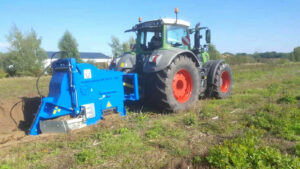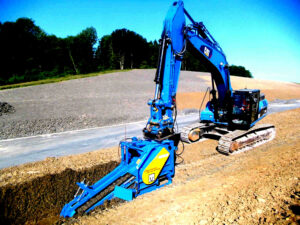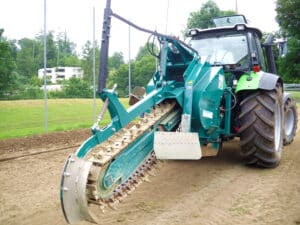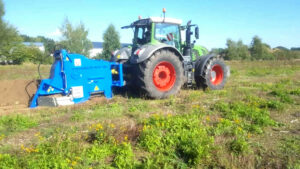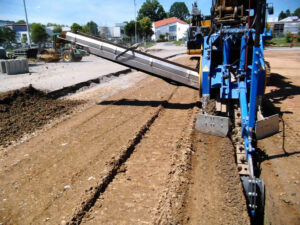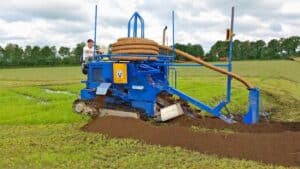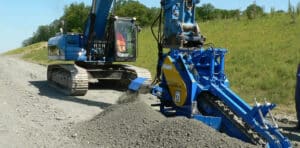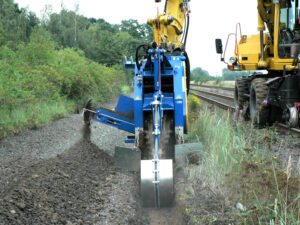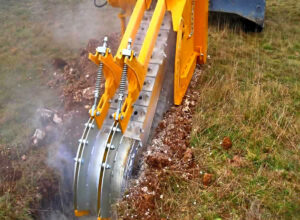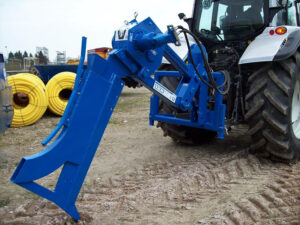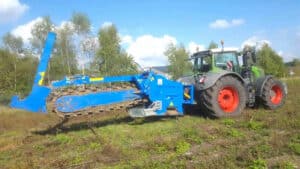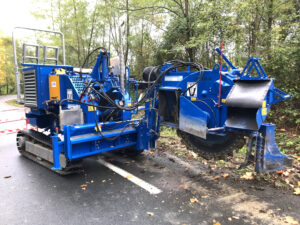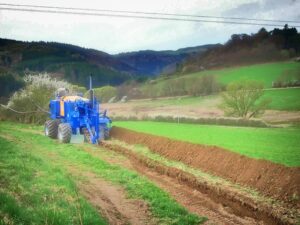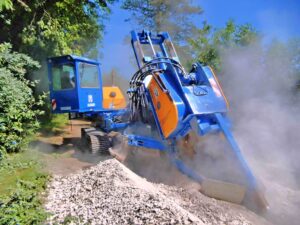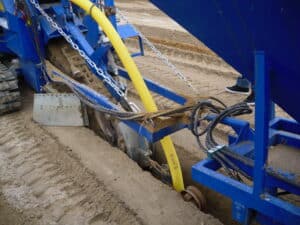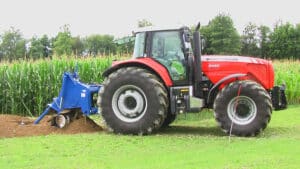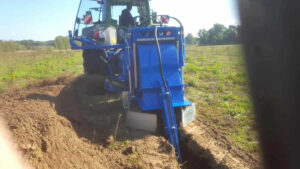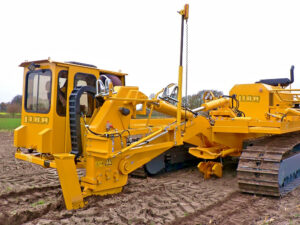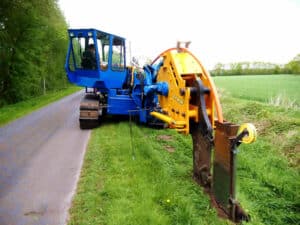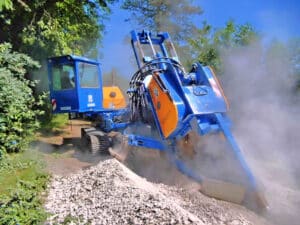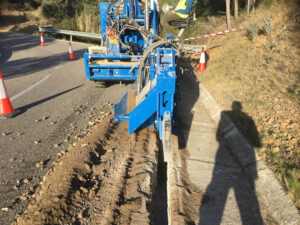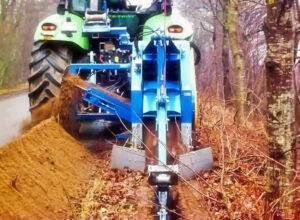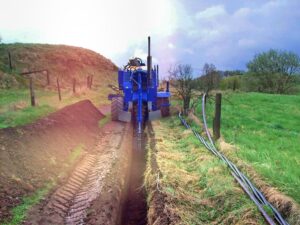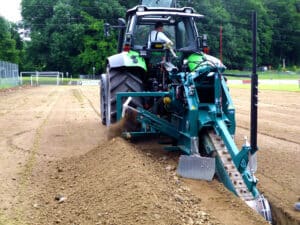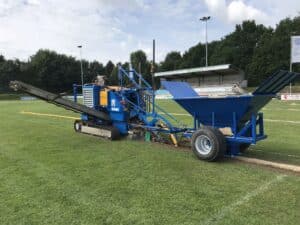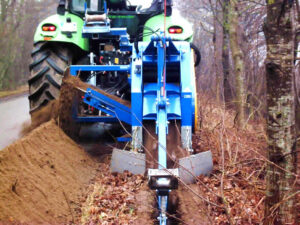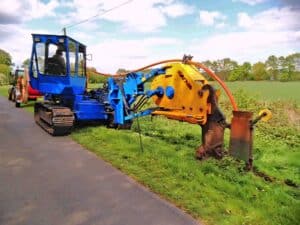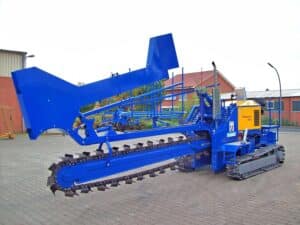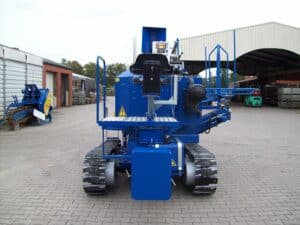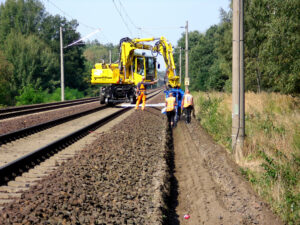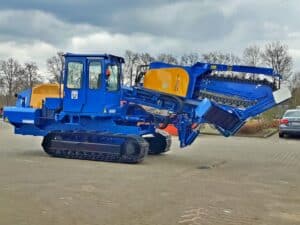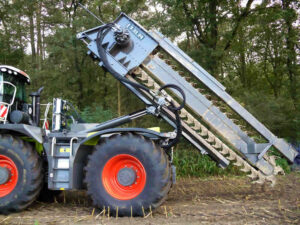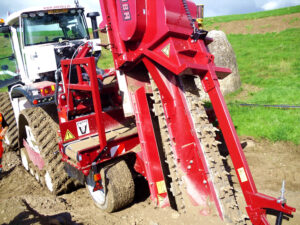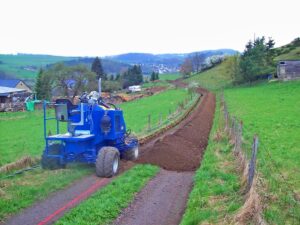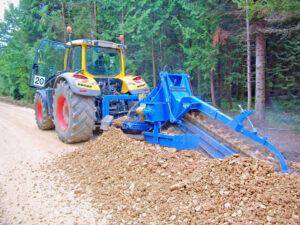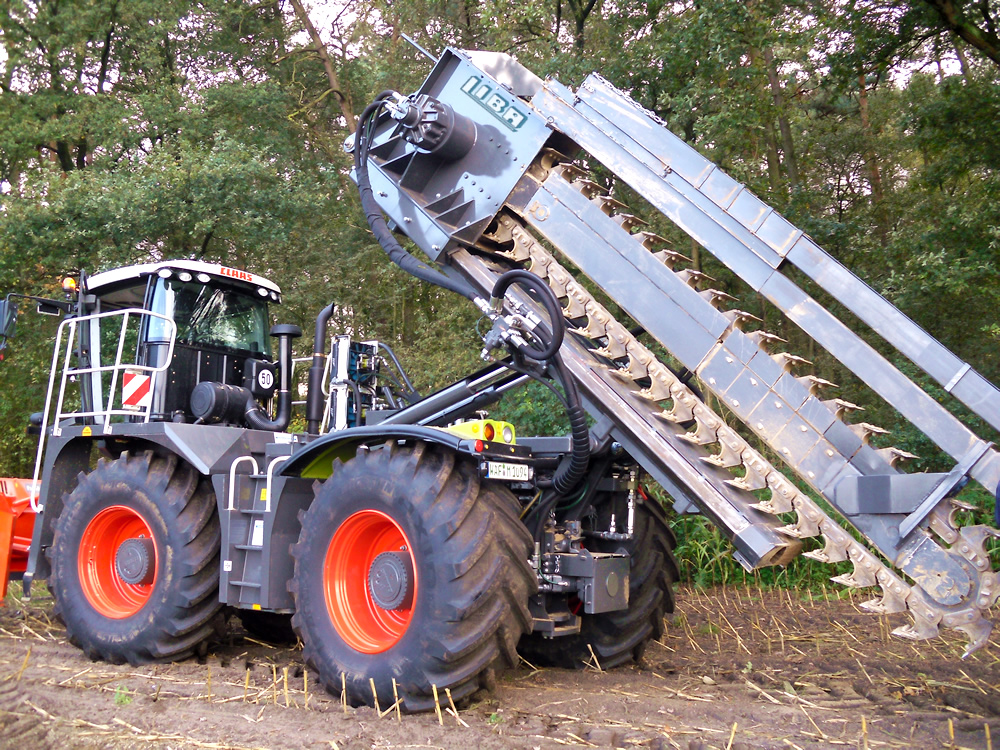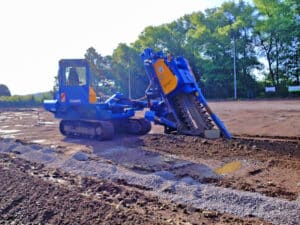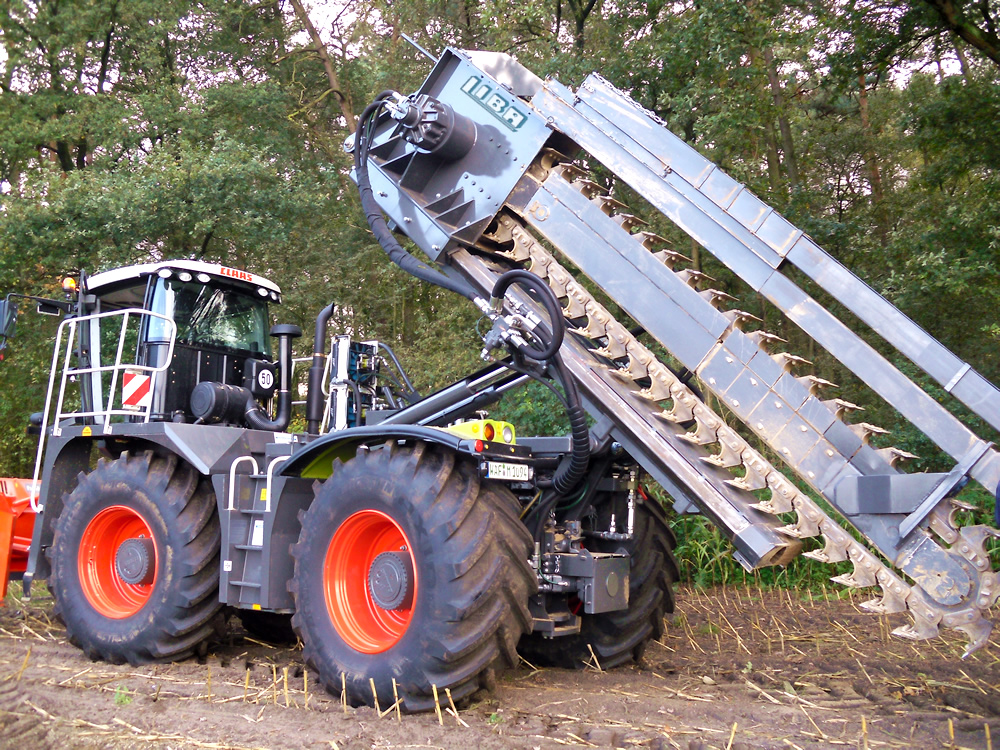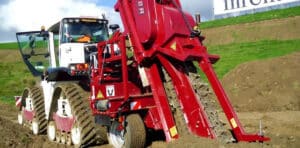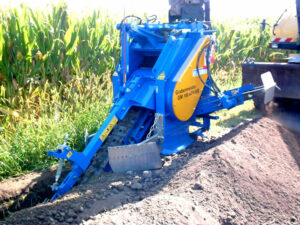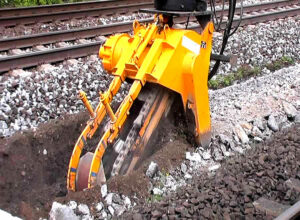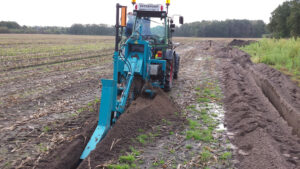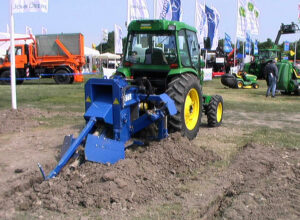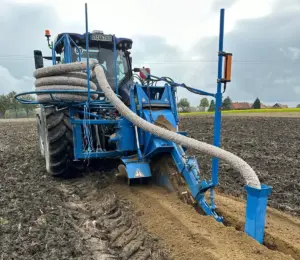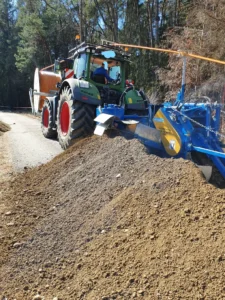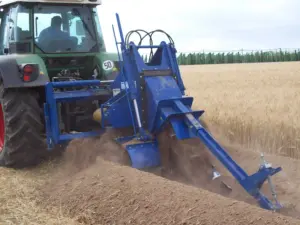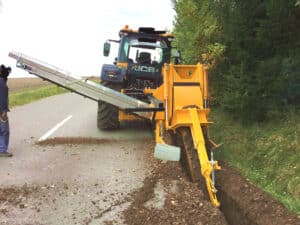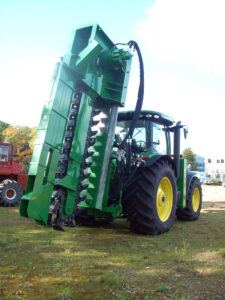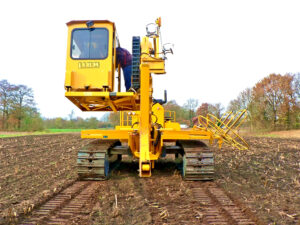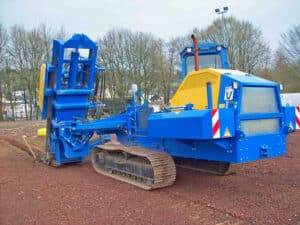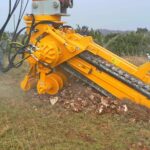Dewatering with the deep milling machine 300 H
A deep milling machine for dewatering is important in an incredible amount of work. A deep tiller is an extremely useful piece of equipment when it comes to improving the drainage of surfaces. It plays a critical role in creating efficient drainage systems and preventing problems such as waterlogging and flooding. Below I explain how a deep tiller is helpful in drainage, using the keyword “drainage” SEO optimized:
1. create dewatering channels: A deep trencher can be used to cut drainage channels or trenches into the ground. These channels make it possible to drain excess water from the surface, thus optimizing the drainage of fields, meadows or other areas.
2. better soil permeability: the deep tiller helps to loosen and aerate the soil at depth. This improves soil permeability by allowing water to penetrate deeper layers more easily. Well-drained soil is a key element for effective drainage.
3. prevention of waterlogging: by milling the soil, waterlogging problems can be avoided. Standing water on the surface is prevented due to the better drainage capacity of the soil, which in turn promotes the health of plants and the use of land.
4. construction projects and infrastructure: deep milling machines are used in construction projects to create drainage pipes or trenches. This is critical to prevent buildings or roads from flooding and sustaining damage during heavy rains.
5. agricultural applications: In agriculture, the deep tiller is used to prepare the soil for plants. Well-drained soil promotes plant growth and minimizes the effects of water saturation on the crop.
6. sports field construction: in the construction of sports fields and golf courses, drainage is crucial to keep playing surfaces dry and usable. Deep milling can help increase drainage efficiency in this regard.
Overall, the deep milling machine is a versatile tool that is essential to improving dewatering and helping to prevent flooding and water damage. For projects where optimal drainage is required, the deep milling machine is an indispensable tool.
Optimal dewatering with a deep milling machine: tips and applications
Effective drainage of land is critical to prevent flooding and improve soil quality. A proven method for optimizing drainage is the use of a deep tiller. In this article, you will learn how to effectively use a deep tiller in drainage to prevent waterlogging and provide optimal protection for your surfaces.
1. soil preparation: before working with the deep tiller, it is important to analyze the soil thoroughly. Determine the optimum depth and location of drainage channels to ensure that water is drained efficiently. This step is crucial to achieve the desired results and prepare the soil in the best possible way for the milling work.
2. choice of depth router: make sure you choose the right depth router for your project. Depending on the type of soil and the planned drainage structure, the choice of machine may vary. Professional advice can be very helpful here.
3. milling work: the actual milling work should be done precisely and carefully. The deep tiller is set to loosen the soil to the desired depth and create drainage channels. This allows water to reach deeper soil layers more easily.
4. ditches and channels: The ditches and canals created are used to divert excess water away from the surface. Make sure drainage paths are optimally designed and water is efficiently drained to prevent waterlogging.
5. soil improvement: deep soil milling not only improves drainage, but also improves soil structure. This promotes soil permeability and helps prevent waterlogging.
6. regular maintenance: after the milling work, it is important to regularly check and maintain the drainage structures. Look for blockages or debris that could impede the flow of water.
Effective drainage is critical to avoid problems such as waterlogging and flooding and to improve soil quality. Using a deep tiller in dewatering is a proven method to achieve these goals. If you need professional assistance or want more information, do not hesitate to contact professionals in this field to successfully implement your project and optimize drainage. Well-done drainage not only safeguards your land, but also increases yields and plant health.


